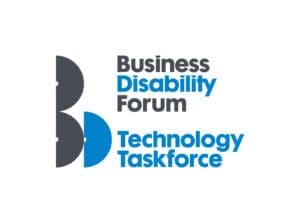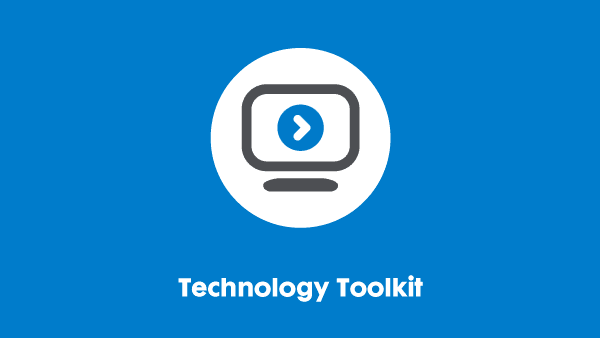Last updated: 4 August 2025
Overview of IT accessibility standards
This resource was created by our Technology Taskforce, a group of senior IT accessibility individuals from leading UK and global organisations. For more information, including how to join, see our website.

Introduction
This resource is an overview of IT accessibility standards. It outlines the major standards so that you can decide which are relevant to your organisation’s needs.
Why conform to external accessibility standards?
Any organisation can set its own standards for IT accessibility. They know their market, they know their products and IT systems, and more than anything else their systems architects and developers know their own capabilities.
However, knowing how to meet the needs of all disabled users (or as many as possible) is difficult, costly and time-consuming. It is far easier to adopt standards designed to do just this. These also have the advantage that there are easily used automated testing tools out there to check that the solution matches the standards – which would not be true if an organisation chose its own standards.
What accessibility standards are available?
There are a number of standards available. It is not necessary to try to conform to them all – some will not be applicable depending on location, sector or nature of work.
However, we recommend using the first two in this resource – WCAG and ISO 9241-171:2008 – as the basis of your own IT accessibility policies and practices.
The accessibility standards outlined in this document are:
- ISO 9241-171:2008 – Part 171: Guidance on software accessibility
- WCAG – Web Content Accessibility Guidelines
- Accessibility standards for mobile devices
- European Standard EN 301 549
- US Section 508 standards
- British Standard BS 8878:2010
- Authoring Tool Accessibility Guidelines (ACAG)
- User Agent Accessibility Guidelines (UAAG).
IT accessibility standards
ISO 9241-171:2008 – Part 171: Guidance on software accessibility
At a glance
ISO 9241-171:2008 concerns “the ergonomics of human-system interaction.” In other words, it provides the standard for creating accessible software systems. It applies to all types of software systems, such as those used at work, at home and in education.
We recommend using this standard as the basis of any organisation’s accessibility standards. It lays down the basics in a way that people new to accessibility development can follow to meet the standards.
More information
Each section and sub-section comes with notes and examples clearly illustrating how the standard can be achieved. Appendix C provides a useful reporting format so that developers can provide a full statement of the accessibility of their solution.
This ISO standard deals with the following themes:
- Names and labels for user interface elements
- User preference settings
- Special consideration for accessibility adjustments
- General control and operation guidelines
- Compatibility with assistive technology
- Closed systems
- Alternative input options
- Keyboard focus
- Keyboard input
- Pointing devices
- General output guidelines
- Visual outputs (displays)
- Texts and fonts
- Colour
- Window appearance and behaviour
- Audio output and its text equivalent (captions)
- Media
- Tactile output
- Documentation, support, and help services.
Find out more on the ISO website.
WCAG – Web Content Accessibility Guidelines
At a glance
WCAG refers to the Web Content Accessibility Guidelines from the World Wide Web Consortium (W3C).
They are about the content of web-based systems, whether they are on the Internet or an Intranet. They are free to read and use.
The WCAG guidelines are our second recommendation as the basic building-blocks of an organisation’s accessibility standards. There is a significant overlap between ISO9241-171 and WCAG, so once one set of standards has been met, there will be few additional items to be taken into account to meet both.
More information
The WCAG website includes sections on understanding the success criteria; how to meet them; a collection of techniques and common failures; and tips for navigating around the WCAG documentation.
The WCAG 2.0 guidelines have been adopted as International Standard ISO/IEC 40500:2012. However, version 2.0 is not the latest version of WCAG. For the latest guidelines, visit the W3C website.
The standards are based on four principles: systems must be:
- Perceivable
- Operable
- Understandable
- Robust
Twelve guidelines (success criteria) show you how to meet these. Each guideline has three levels: A, AA, and AAA.
AAA is the most exacting, but it is up to each organisation to decide whether they want to go to that extent. UK Government departments, for example, only specify that level AA is required.
The WCAG website includes sections on understanding the success criteria and how to meet them. It also provides a collection of techniques and common failures, and tips for navigating around the WCAG documentation.
Accessibility standards for mobile devices
Mobile devices, such as smartphones and tablets, differ from computers in a number of ways – many of which affect accessibility. As a result, to make a website or programme accessible on mobile devices, they must also meet specific mobile device accessibility standards.
WCAG and the ISO standard above already cover creating content that is accessible on mobile browsers.
However, it is important that any apps are designed and built to work on the relevant operating system – usually, Android or iOS.
- Android’s page, ‘Build accessible apps,’ has more information for Android apps.
- Apple’s page, ‘Building accessible apps,’ has more information for iOS apps.
European Standard EN 301 549
European Standard EN 301 549 covers the accessibility requirements for public procurement of IT products and services in the EU. Any public sector body in an EU country must meet these standards when building or buying IT software or hardware.
It sets out WCAG 2.1 as a minimum. It also references ISO 9241-171:2008, among many other standards.
Refer to the European Telecommunications Standards Institute’s website for more information.
US Section 508 standards
Section 508 is commonly used shorthand for section 508 of a 1998 amendment to the US Rehabilitation Act 1973. It applies to all bodies that receives US public funds or is under contract to a US federal agency.
Commercial off-the-shelf software packages developed in the United States may have been built to the US Section 508 Accessibility Standards, rather than WCAG or ISO. However, they were recently revised to incorporate WCAG 2.0 level AA criteria.
More information is available on the Section 508 website.
British Standard BS 8878:2010
British Standard 8878 is a Web Accessibility Code of Practice that was introduced in 2010. It explicitly sets out to guide organisations on meeting the UK’s Equality Act 2010 requirements on accessible web products.
It does not cover the technical, design or testing aspects of accessibility – these are already covered by ISO 9241-171:2008.
Instead, it describes a framework to organise the process of ensuring accessibility in projects. It also develops the key ideas for making accessibility policies and expands on the steps that organisations should take to help ensure the accessibility of their web products.
The aspects covered by BS8878 include:
- Procurement and selection of production tools and Content Management Systems
- Outsourcing production to third parties
- Project management of inclusive production
- Assessment of accessibility risk and impact on budgets
- Governance of inclusion across a programme of web production projects
Read the British Standards Institution’s website for more information.
User Agent Accessibility Guidelines (UAAG)
At a glance
These guidelines address the accessibility of web browsers and media players, including some aspects of assistive software. They are developed by W3C, and form part of the interacting series of guidelines headed by the WCAG standards.
They are intended for the use of developers of these programmes, rather than their end-users.
More information
The guidelines feature checkpoints which cover:
- Access to all content, including content tied to events triggered by the mouse or keyboard
- User control over how content is rendered
- User control over the user interface, with documentation of accessibility features
- Standard programming interfaces, to enable interaction with assistive technologies.
UAAG uses the same first three principles of ‘perceivable,’ ‘operable’ and ‘understandable’ as the WCAG. However, in place of ‘robust,’ it has two new principles:
- ‘Programmatic access’
- ‘Specifications and conventions.’
Therefore, POUR becomes POUPS. See the W3C’s guidance on UAAG for more information.
Authoring Tool Accessibility Guidelines (ATAG)
ATAG is about making authoring tools accessible to disabled authors of web content. It does not concern the accessibility of web content itself.
Authoring tools means software and services that authors use to create web content, such as web pages, apps and programmes. Authors include web developers, designers, writers, and anyone else creating web content.
It also aims to help authors create more accessible web content, by enabling, supporting and promoting WCAG.
They are developed by W3C, and form part of the interacting series of guidelines headed by the WCAG standards. See W3C’s guidance on ATAG for more information.
If you require this content in a different format, contact enquiries@businessdisabilityforum.org.uk.
© This resource and the information contained therein are subject to copyright and remain the property of the Business Disability Forum. They are for reference only and must not be copied or distributed without prior permission.
